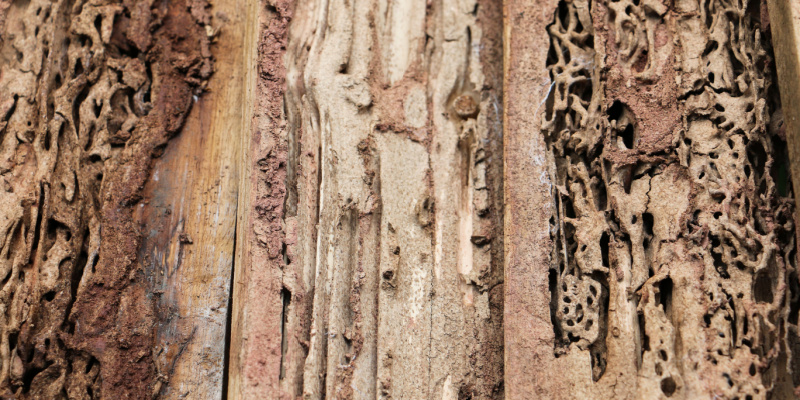How can something so tiny cause such significant damage? Many people think that because you rarely see termites running around your home that they shouldn’t be as big of a threat. This is entirely untrue. If left unchecked, termites can quickly and quietly destroy the framing, walls, and foundation of a home, leading to costly repairs and potential safety hazards. In some cases, termites can even cause a home to become uninhabitable.
Several factors can increase the likelihood of termites causing significant damage to a home. These include:
- The type of termites present
Some types of termites, such as subterranean termites, are more likely to cause significant damage to a home than others. Subterranean termites are particularly destructive because they can build large colonies and are capable of consuming large amounts of wood. - The size of the infestation
The larger the infestation, the more damage termites are likely to cause. If termites are left unchecked for a long period of time, they can build up a large population and consume large amounts of wood, leading to more extensive damage. - The condition of the home:
Homes that are in poor condition or have significant structural damage are more vulnerable to termite infestations and may be more likely to suffer significant damage if termites are present. - The presence of moisture
Termites are attracted to moisture and are more likely to infest a home if there is excess moisture present. Homes with leaky pipes, faulty gutters, or other sources of moisture are more likely to attract termites and may be more susceptible to damage.
Signs of Termites in Your Home
There are several signs that you may have termites in your home. If you notice any of the following, it is important to contact a professional pest control company to assess the situation and recommend a course of action:
- Visible damage to wood: As they eat through your wood, termites can cause holes, tunnels, or other visible damage.
- Peeling paint or wallpaper: If they are chewing on the wood behind the paint, it can cause the wallpaper to peel.
- Discarded wings: After termites mate and establish a new colony, they shed their wings. If you find piles of discarded wings, it could signify an active termite infestation.
- Swelling or blistering in wood: Termites can cause wood to swell or blister as they consume it from the inside out. This can create a rough or bumpy surface on the wood.
- Visible termite tubes: Termites create small, mud-like tubes to travel between their nest and a food source. These tubes may be visible on a home’s exterior, crawl spaces, or basements.
If you notice any of these signs, act quickly to prevent further damage and protect the value of your property. Ignoring termite damage can lead to more extensive and costly repairs in the long run.
What To Do If You Have Termites
To protect your home from termites, it is essential to regularly inspect for signs of infestation and take steps to prevent them. This can include sealing entry points, eliminating sources of moisture, and storing firewood and other cellulose materials away from the house. If you suspect your home may be infested with termites, it is crucial to contact a professional pest control company to assess the situation and recommend a course of action. Taking these preventive measures can help protect your home from termites and minimize the risk of significant damage.
In conclusion, termites can be extremely destructive pests and can cause serious damage to your home. Unfortunately, detecting an infestation is not always easy until the damage has already been done. The best way to prevent termite damage is to have regular inspections by a professional pest control service like Target Pest Control. They will help you identify any existing or potential problems before they cause major destruction.








